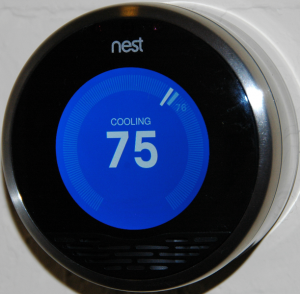 It wasn’t long after my husband connected our first smart home device, a Nest Learning Thermostat, that I noticed a change.
It wasn’t long after my husband connected our first smart home device, a Nest Learning Thermostat, that I noticed a change.
Each time he walked by this new gadget, he would stop and do a little dance. He was interacting with this new friend, and it was a purely emotional response. He even insisted we repaint our wall to better showcase the Nest Thermostat, though he never suggested that for our artwork. Not only was our home connected, but now our hearts were in it.
This was no ordinary smart device. The Nest Thermostat gave us a sense of power, control, and freedom. And it said “hi” to us with its shining light as we approached. The best thing was the money we were saving by lowering our electricity bill, because we could now make sense of how we were using our air conditioning. This also helped reduce our carbon footprint. Read More











